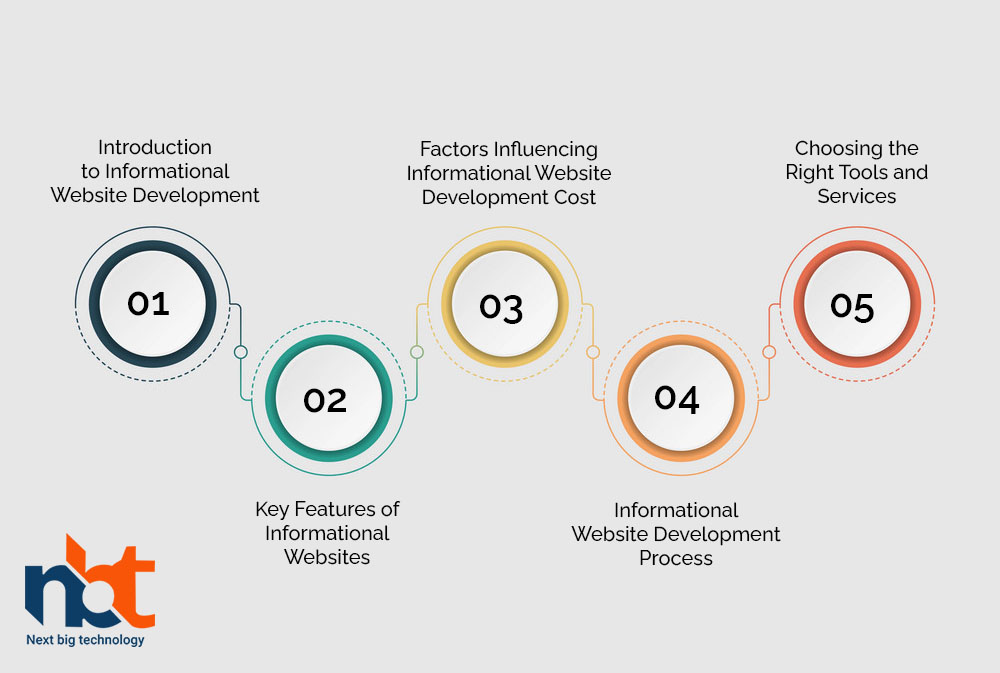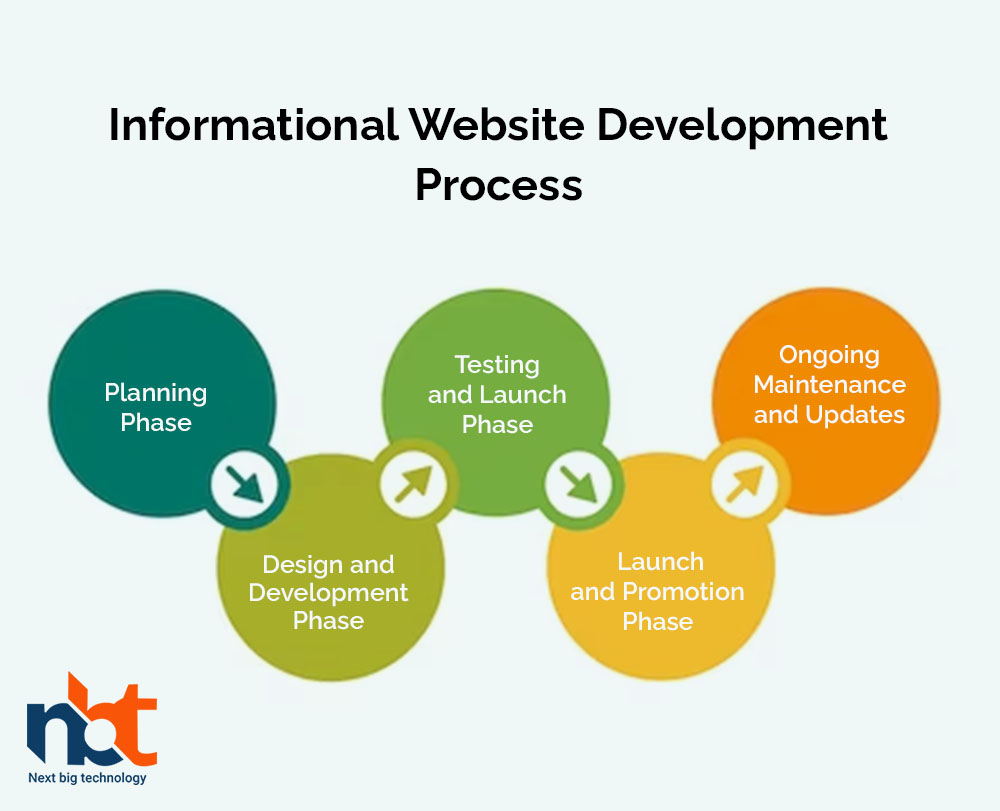In the digital age, informational websites play a vital role in disseminating knowledge, providing valuable resources, and offering insights to users on various topics. Whether you’re aiming to educate, inform, or share expertise, developing an effective informational website requires careful planning, thoughtful design, and a user-centric approach. This comprehensive guide explores the key features, cost considerations, and step-by-step process involved in creating an impactful informational website.
Table of Contents
Introduction to Informational Website Development
Understanding Informational Websites
Defining the purpose and significance of websites focused on sharing knowledge.
Advantages of Informational Websites
Accessibility, broad reach, continuous updates, and enhanced credibility.
Key Features of Informational Websites
High-Quality Content
- In-Depth Articles: Creating detailed, informative articles on relevant topics.
- Research and Citations: Providing well-researched information supported by credible sources.
- Infographics and Visuals: Enhancing content with graphics, charts, and diagrams.
User-Friendly Navigation
- Clear Menu Structure: Organizing content logically for easy navigation.
- Search Functionality: Enabling users to quickly find specific information.
- Breadcrumb Navigation: Displaying the user’s path within the website.
Responsive Design
- Mobile Compatibility: Ensuring the website functions flawlessly on smartphones and tablets.
- Adaptive Layout: Adapting the design to various screen sizes and orientations.
Multimedia Integration
- Images and Videos: Enhancing content with visual aids and explanatory videos.
- Audio Resources: Including podcasts or audio recordings for a diverse learning experience.
Interactive Elements
- Quizzes and Surveys: Engaging users with interactive quizzes and surveys.
- Calculators and Tools: Providing users with useful online calculators or tools.
- User Comments: Allowing users to comment and share their thoughts on articles.
Resource Libraries
- Downloadable Resources: Offering PDFs, eBooks, or downloadable guides.
- Resource Categorization: Organizing content into categories for easy access.
- Recommended Reading: Suggesting related articles or resources.
Subscription and Updates
- Newsletter Subscription: Allowing users to subscribe for updates and new content.
- Email Notifications: Sending alerts when new articles or resources are added.
- RSS Feeds: Offering RSS feeds for users to stay updated via feed readers.
Accessibility:
- Alt Text for Images: Providing descriptive text for images for users with visual impairments.
- Readable Fonts: Using legible fonts and appropriate font sizes.
- Color Contrast: Ensuring sufficient contrast for text and background elements.
Factors Influencing Informational Website Development Cost
- Content Volume and Quality: The extent of content creation and research required.
- Design Complexity: The intricacy of design elements, graphics, and layouts.
- Functionality and Interactivity: Adding interactive tools, quizzes, and calculators.
- Multimedia Integration: Incorporating images, videos, and audio resources.
- Custom Development: Building unique features or content management systems.
- Maintenance and Updates: Ongoing content creation, updates, and technical support.
Informational Website Development Process
Planning Phase
- Define Objectives: Clarify the goals and purpose of the informational website.
- Target Audience: Identify the demographic and interests of the intended users.
- Content Strategy: Plan the topics, articles, and multimedia elements.
- Technology Selection: Choose a suitable content management system (CMS) or development platform.
Design and Development Phase
- Content Creation: Develop high-quality, well-researched content on selected topics.
- Website Structure: Organize content into categories and sections.
- Design and Layout: Create an intuitive, visually appealing, and readable design.
- Multimedia Integration: Add images, videos, and interactive elements.
- Interactive Tools: Incorporate quizzes, calculators, and other interactive features.
Testing and Launch Phase
- Quality Assurance: Thoroughly test all features, forms, and interactions.
- User Experience Testing: Ensure ease of navigation and positive user interaction.
- Mobile Responsiveness: Verify the website’s performance on various devices.
- Content Review: Proofread articles for accuracy, grammar, and clarity.
- Accessibility Check: Ensure the website is accessible to users with disabilities.
Launch and Promotion Phase
- Final Deployment: Upload the website to the chosen hosting server.
- Promotion Strategy: Share your website on social media, forums, and relevant communities.
- User Onboarding: Provide guidance on how to use the website effectively.
- Analytics Setup: Implement tracking tools to monitor user engagement and traffic.
Ongoing Maintenance and Updates
- Regular Content Updates: Keep the website fresh with new articles and resources.
- Technical Support: Address any technical issues promptly.
- Monitoring Analytics: Analyze user behavior and adjust content accordingly.
- Security Measures: Implement updates and security patches as needed.
Choosing the Right Tools and Services
- Content Management Systems (CMS): Explore options like WordPress, Joomla, or Drupal.
- Multimedia Integration Tools: Utilize image editors, video platforms, and audio hosting.
- Interactive Element Plugins: Choose plugins or tools for quizzes, surveys, and calculators.
- Design and Development Professionals: Hire designers, developers, and content creators.
- Accessibility Tools: Implement tools to ensure ADA compliance and accessibility.
Conclusion
In conclusion, an effective informational website serves as a valuable resource hub for users seeking knowledge and insights. The features you incorporate, the quality of your content, and ongoing maintenance efforts all contribute to the overall cost. By following a structured development process, leveraging appropriate tools, and focusing on user experience, you can create an impactful online platform that educates, informs, and engages your target audience.












